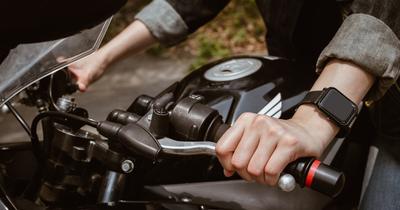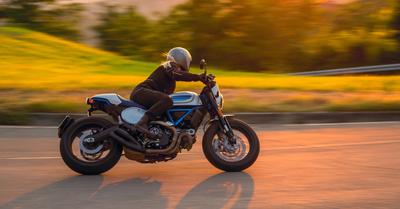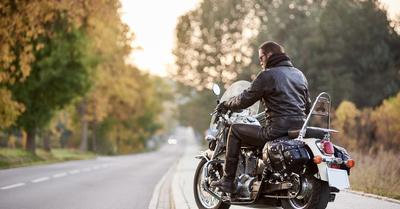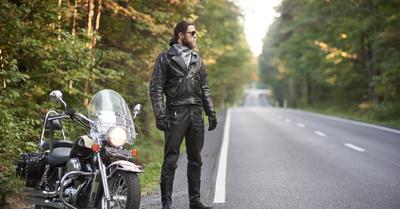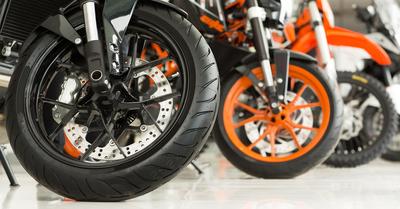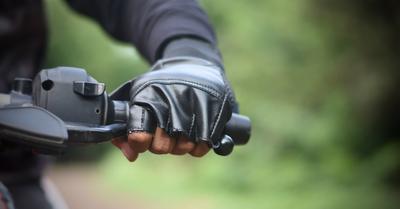Cornering a Motorcycle Confidently
Cornering on a motorcycle is both an essential skill and one of the most thrilling aspects of riding. Being able to confidently and safely navigate a turn not only increases the enjoyment of a ride but is also a crucial component in rider safety. Understanding the dynamics of cornering, from the entry point to the exit, allows a motorcyclist to maintain stability and control, reducing the risk of accidents. It involves a combination of proper body positioning, precise throttle control, and a keen awareness of the riding environment.
The ability to corner properly is not instinctive; it is an acquired skill that develops over time and with practice. Riders must learn how to select the appropriate entry point into a curve, determine the right speed, and execute the turn while managing lean angle and traction. Mastery of these techniques comes from following a systematic approach to learning and integrating expert tips into practice sessions.
Step-by-Step Guide to Cornering a Motorbike
Mastering the art of cornering on a motorbike requires precision, control, and practice. This guide explains the critical steps to take a corner smoothly and confidently, focusing on managing your speed, body position, and bike balance.
Approach the Corner with Controlled Speed
Reducing speed before a corner is crucial. Assess the entry speed that allows you to navigate safely, considering road conditions and traffic.
Choose the Appropriate Entry Point
Select an entry point that offers a clear path through the corner. This position sets you up to follow the desired line and maintain balance throughout the turn.
Position Your Body and Bike Correctly
Proper body position on your motorcycle can greatly affect balance and control. Lean your body into the corner, aligning with the bike's lean to navigate the turn effectively.
Look Through the Turn
Avoid target fixation and instead focus on where you want to go. Looking through the turn helps steer the bike and maintain the correct line.
Begin Learning Smoothly
Initiate the lean smoothly and progressively. Abrupt movements can upset the bike’s balance and traction.
Maintain Consistent Throttle Control
Apply throttle control to keep the speed steady and the motorcycle stable. Speed changes should be subtle to maintain traction.
Stay Relaxed on the Handlebars
A relaxed grip allows for clearer steering inputs and better handling. Tense arms can lead to overcorrection and loss of control.
Follow the Desired Line
Commit to the line you’ve chosen through the corner, adjusting slightly if necessary. Be mindful of potential obstacles or changes in the track surface.
Gradually Roll on the Throttle While Exiting
As you exit the turn, gently accelerate to stabilize the bike and restore upright balance.
This guide addresses critical cornering techniques, notably managing speeds and maximizing bike control for safer, more enjoyable rides. Remember that consistently practicing these techniques is necessary to grow your cornering skills and confidence.
Expert Tips for Cornering a Motorbike
To corner a motorbike proficiently, certain techniques and understandings must be second nature. Whether you're navigating a tight bend or sweeping through a curve on the open road, your control, safety, and confidence are paramount. Reflect on these expert tips to enhance your cornering skills, ensuring every turn is executed with precision.
Master Countersteering
To effectively initiate a turn, master countersteering which involves pushing the handlebar on the side you wish to turn towards. This seemingly counterintuitive action is essential for directional change and balance at higher speeds.
Pros:
- Enables quick and sharp turns.
- Improves overall stability.
Cons:
- Counterintuitive at first.
- Requires practice to perfect.
Maintain Proper Traction
Traction is the grip your tires have on the road, and it’s pivotal for safe cornering. Always ensure your tires are in good condition and the road surface is assessed for optimum traction.
Practice Trail Braking
Trail braking is a technique where you gradually ease off the brake as you enter the corner, transferring weight to the front wheel to help the bike turn in. It's a nuanced skill that can enhance your control.
Know Your Bike's Limits
Understanding the performance limits of your motorcycle ensures that you never push it beyond what it can handle safely. Stick within these boundaries to maintain control.
Look Ahead, Not Down
Always focus on where you want to go, rather than the immediate road in front of you. Target fixation can lead to mistakes; looking ahead allows you to better anticipate and prepare for the turn.
Stay Relaxed
Keeping your body relaxed helps in maneuvering the bike and prevents fatigue. Tensed muscles can reduce your ability to react swiftly and accurately.
Adjust Speed Appropriately
Enter corners at a speed that you’re comfortable with, and that the conditions allow. This gives you more time to react to unexpected situations and eases the bike into a lean.
Use Body Weight Effectively
Shift your body weight to improve the bike's balance and steering into a corner. Subtle movements can have a big impact on the bike's dynamics.
Gradually Increase Lean Angle
As you gain confidence and skill, you can increase your lean angle. Begin with small leans and increase them as you get more comfortable with the bike's limits and your abilities.
Entry Point Selection for Cornering a Bike
Choosing the right entry point when approaching a corner on a motorcycle is paramount to safe and confident riding. This initial step sets the stage for the entire cornering process, affecting entry speed, line taking, and overall safety.
Entry Speed
Begin by moderating your speed. It's essential to approach the corner at a speed you're comfortable with, which will vary depending on your skill level and the difficulty of the turn.
- Proper speed ensures better control during cornering.
- Excessive speed can lead to going wide or running off the road.
Identify the Line
Observing the road ahead, spot the line that will allow a smooth arc through the corner. Visibility and road conditions influence this choice. A proper line minimizes lean angle while maximizing stability and traction.
- The ideal line offers the widest arc through the corner.
- A good line maintains optimal visibility and prepares for the exit.
Safety
Always consider your safety and that of others. Be mindful of potential hazards like gravel, oil, or water on the road, which can drastically alter the bike's traction and your chosen line.
- Wet or dirty roads demand a more conservative approach.
- Surface imperfections require quick but smooth adjustments in the line.
By integrating these principles, riders can select an entry point for cornering that is both safe and confidence-inspiring. Consistent practice with these techniques helps develop the muscle memory and judgment needed for proficient cornering. Always remember, smoothness is key — from braking to entering the corner to throttling out.
Mastering Braking Technique for Confident Cornering
Braking is a critical skill when it comes to confidently navigating corners on a motorcycle. The way you manage your brakes can make the difference between a smooth cornering experience and a heart-pounding moment. In this comprehensive guide, we'll delve deep into braking techniques that will enhance your cornering skills and ensure you tackle twists and turns with confidence.
Understanding the Basics of Braking
Before we dive into the intricacies of braking techniques, it's essential to grasp the fundamentals. On a motorcycle, there are two main types of brakes: the front brake and the rear brake.
Front Brake
The front brake is the primary stopping force on a motorcycle. It provides the majority of your stopping power and plays a crucial role in controlling your speed and stability during cornering.
Rear Brake
The rear brake, on the other hand, assists in slowing down the motorcycle and can help stabilize it during certain situations. However, it should be used judiciously, especially when cornering, to avoid losing traction.
Applying Progressive Braking
Progressive braking is a key concept to understand when it comes to confidently cornering on a motorcycle. It involves applying the brakes smoothly and progressively, rather than grabbing a fistful of brake lever in a panic. This technique is crucial for maintaining control and stability while entering a corner.
Front Brake Application
When approaching a corner, apply the front brake with a gradual squeeze on the lever. Avoid slamming it, as this can lead to a loss of traction and instability. Start with light pressure and progressively increase it as needed to slow down.
Rear Brake Control
While the front brake is your primary stopping power, the rear brake can complement it. Lightly apply the rear brake to assist in slowing down, but be cautious not to lock the rear wheel, which can result in a skid.
Trail Braking
Trail braking is an advanced technique used by experienced riders to manage speed and control during corner entry. It involves continuing to apply the brakes while leaning into the corner. This technique shifts weight to the front wheel, improving grip and control.
Corner Entry Braking
As you approach a corner, initiate your braking before you start leaning into the turn. This allows you to scrub off speed while maintaining an upright position, ensuring stability.
Brake Release While Leaning
As you begin to lean into the corner, gradually release the brakes. This step is crucial, as releasing the brakes too abruptly can cause the suspension to rebound, unsettling the bike.
Smooth Transition
The key to an effective braking technique during corner entry is achieving a smooth transition from braking to cornering. This ensures that you maintain control and stability as you navigate the corner.
Practice Makes Perfect
The braking technique is a skill that requires practice and refinement. Head to a safe, empty parking lot or a dedicated riding school to hone your braking skills. Practice emergency stops, progressive braking, and trail braking until they become second nature.
Enhancing Cornering Confidence Through Vision and Line Choice
When it comes to confidently cornering on a motorcycle, your vision and line choice play a pivotal role in ensuring a safe and exhilarating riding experience. In this detailed guide, we will explore the nuances of how your eyes and line selection impact your ability to navigate corners with precision and confidence.
The Power of Proper Vision
Having the right vision strategy is paramount for successfully navigating corners. Your eyes are your most valuable tools when it comes to perceiving the road ahead and making split-second decisions.
Look Where You Want to Go
One of the fundamental principles of motorcycle cornering is to look in the direction you want to travel. Your motorcycle tends to follow your line of sight, so if you fixate on an obstacle or the edge of the road, you're more likely to veer in that direction.
Scanning the Apex
As you approach a corner, focus your gaze on the apex—the point where the corner's curvature is most pronounced. This not only helps you gauge the entry point but also allows you to plan your line through the corner.
Using Peripheral Vision
While your main focus should be on the apex and your intended path, it's crucial to maintain awareness of your peripheral vision. This broader perspective helps you stay attuned to potential hazards, vehicles, or changing road conditions.
Smooth Transitions with Your Eyes
Just as with braking, smooth transitions are key when it comes to vision. As you enter the corner, your eyes should smoothly transition from the entry point to the apex and then to the exit point. This fluid motion ensures you're constantly aware of your chosen path.
Understanding the Ideal Line
Choosing the right line through a corner is an art that skilled riders master. Your line is the path you follow as you navigate the corner, and it can significantly affect your cornering confidence.
The Classic Line
The classic line through a corner involves starting wide, then gradually tightening your trajectory to hit the apex before tracking out toward the exit. This line maximizes visibility through the corner and allows for smooth acceleration out of it.
Late Apex Line
In some situations, a late apex line may be more appropriate. This involves delaying your turn-in to hit the apex later in the corner. Riders often choose this line when there are obstacles on the inside or when they want to set up for a straight exit.
Consistency Is Key
Once you've chosen your line, it's essential to stick with it throughout the corner. Consistency in your chosen path ensures stability and predictability in your riding, reducing the chances of surprises.
Practice and Adaptation
Mastering vision and line choice takes practice and adaptability. Different corners, road conditions, and riding scenarios may require adjustments to your approach. Continuously challenge yourself to refine these skills and become a more confident and skilled rider.
Frequently Asked Questions
When it comes to mastering motorcycle cornering, it's essential to understand both the basics and more advanced tactics. Let's answer some common questions to enhance your turning skills and confidence on the road.
What are some advanced techniques for improving cornering skills on a motorcycle?
For seasoned riders aiming to refine their cornering, advanced techniques include trail braking and understanding the concept of late apex. Trail braking involves braking into the curve, which helps in managing speed and vehicle stability. Late apexing is another method that extends the entry phase of a turn, allowing for a safer, faster exit.
How can I safely perform high-speed cornering on my motorcycle?
High-speed cornering requires precise control and an understanding of the motorcycle's dynamics. One key practice is choosing your line wisely and adhering to it throughout the corner. Additionally, proper throttling and leaning at the appropriate moments can greatly enhance performance and safety during high-speed maneuvers.
What is the correct body position for cornering on a motorcycle?
The correct body position involves not only positioning your arms and legs correctly but also how you distribute your weight. You'll need to position your body to help the bike maintain stability and traction. This typically includes a slight forward lean and keeping your arms relaxed and bent.
What are the best practices for beginners to turn a motorcycle effectively?
Beginners should start with fundamental practices such as learning to maintain steady throttle control, using the countersteering technique, and observing their surroundings to predict appropriate turning maneuvers. Ensuring braking is completed before entering a turn is another crucial practice for effective cornering.
How does countersteering work and why is it important for motorcycle cornering?
Countersteering is a technique used to initiate a turn by pressing on the handlebar in the direction opposite of where the rider wants to go. It's a counterintuitive motion that might seem strange at first, but it's essential for prompt and precise direction changes, particularly at higher speeds.
During a motorcycle stop, what is the procedure for handling the clutch and handlebars?
In stopping scenarios, handling the clutch and handlebars with care is vital. Ensure smooth, controlled use of the clutch lever to engage and disengage the engine without abrupt motions. Simultaneously, maintaining a firm yet gentle hold on the handlebars will contribute to a stable and controlled stop.





